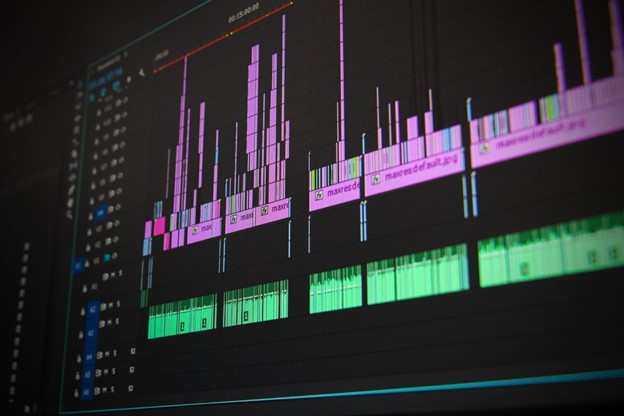The wedding day is a once-in-a-lifetime event filled with love, joy, and amazing memories. It’s a day that should be documented and treasured for a lifetime. Wedding memories are more than just passing moments; they have the capacity to transport us back to that wonderful day and relive our feelings and experiences.
Photographs have always been the preferred method of preserving wedding memories. While they have their own magic, image-to-video transitions elevate wedding storytelling to new heights. We can enrich the visual narrative and create a thrilling trip through the wedding day by smoothly combining images into a video format.

Image-to-video transitions create a smooth transition between each image, transforming it into a dynamic and fascinating story. It’s as if you’re seeing a film that depicts the beauty, joy, and excitement of the wedding day. These transitions transport the audience from the emotional moments of the ceremony to the joyful celebrations of the reception.
We open up a world of creative possibilities by introducing the concept of image-to-video transitions. Each image serves as a puzzle piece, carefully arranged to produce a meaningful and memorable film. The transitions give a magical touch, connecting the dots between each scene and creating strong emotions.
The Power of Image-to-Video Transitions
Image-to-video transitions have the amazing potential to bring wedding photographs to life, converting them from static snapshots into dynamic moments that unfold in front of our eyes. These transitions transport us beyond the constraints of individual photos, allowing us to experience the wedding day as a seamless and immersive narrative.
When images transition smoothly from one to the next, a sense of continuity and fluidity is created. This smooth transition between shots increases the wedding video’s storytelling aspect, bringing viewers in and keeping them involved. It’s as if the photographs are speaking for themselves, forming a visual tapestry that captures the essence of the day.
The emotional significance of these smooth transitions cannot be overstated. They have the ability to touch viewers’ hearts and trigger a wide spectrum of emotions. The smooth fade from one image to the next might inspire nostalgia, recalling the warmth and happiness of the wedding day. The seamless movement between images can also create a sense of anticipation for the following scene in the story.
Consider witnessing the first dance unfold in front of your eyes as the couple gracefully glides across the dance floor. Image-to-video transitions mix still images into one another, providing a sense of movement. Each frame becomes a brushstroke in a living picture, capturing the couple’s unique moment with beauty and grace.
Furthermore, these transitions allow for novel storytelling techniques. We can highlight specific aspects of the wedding day by strategically positioning photographs and utilizing transitions. A dissolve transition, for example, can represent the joining of two lives at the exchange of vows. A zoom-out transition can highlight the grandeur of the venue or the breathtaking surroundings that surround it.

Enhancing the Wedding Experience with Creative Transitions
When it comes to enhancing the wedding experience using image-to-video transitions, the sky is the limit. The selection of transitions has a significant impact on the visual impact and emotional resonance of the final wedding video. In this section, we’ll look at several sorts of transitions and their distinct visual impacts, as well as specific strategies that might elicit emotion and enhance storytelling.
The fade is a prominent sort of transition. This classic transition involves blending one image into another in a delicate and seamless manner. Fades can create nostalgia and romance while softly moving the observer from one moment to the next. It’s a subtle but effective method that’s great for wedding storytelling.
Dissolution is another common transition. The dissolve transition, like the fade, progressively blends one image into another. Instead of a straight fade, both images are visible for a brief duration, producing a sensation of overlap. Dissolves are frequently used in stories to represent a change or progression, such as transitioning from the ceremony to the reception or from one location to another. They can add a layer of mystery and suspense to the video, capturing the viewer’s attention.
Zooming and panning can be used to create more dynamic and energetic transitions. Zooming in and out of an image can have a dramatic effect, bringing attention to specific features or capturing the majesty of a location.
Specific transition techniques can also be used to elicit strong emotions and enhance the storytelling experience. A crossfade transition, for example, can represent the merger of two lives or families. During lively moments, such as the dance floor or the bouquet toss, a fast-paced cut transition can create an energetic and celebratory mood. By selecting transitions that match the emotional tone of the scenario, the wedding film transforms from a collection of photographs to a strong storytelling medium.

Sharing and Preserving Image-to-Video Transitions
After you’ve poured your heart and soul into creating an image-to-video transition masterpiece of your wedding memories, it’s time to share it with the world and keep it as a treasured keepsake. In this section, we’ll look at different sites for sharing and distributing your final video, as well as methods for keeping it safe for years to come.
There are various places to consider when it comes to distributing your image-to-video transition production. Social media platforms like YouTube, Vimeo, and Instagram have a large audience and allow you to effortlessly share your video with friends, family, and even a larger audience. These services enable you to post your video and provide a link that can be shared across multiple media, ensuring that your work reaches the intended audience.
You might also put your video on your own website or blog. This gives you complete control over the watching experience and allows you to customize how your movie is presented. You may embed the video right into your website or build a separate page where visitors can watch and interact with your work.
In addition to sharing, saving your image-to-video transition as a treasured souvenir is essential. After all, your wedding memories should be kept for a lifetime. Consider the following suggestions for archiving your video:
- Backup your video: Make a backup copy of your video and save it somewhere safe. This might be on an external hard drive, on the cloud, or both. Having numerous copies ensures that even if one fails, you will still have a backup.
- Make physical copies: Think about making tangible copies of your film, such as DVDs or USB devices. These can be kept in a safe place and accessed whenever you want to revisit those priceless memories.
- Choose high-quality formats when saving your video: When saving your video, choose high-quality formats that preserve the visual integrity of your work. This ensures that the video quality is preserved even if you see it years later.
- Organize and catalog your videos: Keep a record of your films, including dates, locations, and any special details. This makes it easy to find and return to specific points in the future.
- Share with future generations: As part of your family history, consider passing down your video to future generations. This can be accomplished by including material in family archives, making personalized DVDs for family members, or even incorporating it into a time capsule.
Examples from Real Life and Inspiration
Getting ideas for your own image-to-video transition wedding film from real-life examples can be a terrific approach to spark your imagination and explore new possibilities. In this part, we’ll show you examples of successful image-to-video transition videos and talk about how they captured the spirit of the couples’ special day personalities.
Sarah and Mark: Sarah and Mark’s wedding movie used image-to-video transitions to express their love story elegantly. The film started with the couple’s childhood images, then flawlessly transitioned into their engagement photos, and eventually culminated in their wedding day events. The transitions were meticulously matched with the music, resulting in an emotional journey that commemorated their shared experience.
Emily and David: Emily and David’s video demonstrated a novel way to image-to-video transitions by combining pictures and brief video segments. The flawless transitions between the two mediums enhanced the tale by adding depth and dimension. The video seamlessly moved viewers from the emotional exchange of vows to the enthusiastic celebration on the dance floor, resulting in a multi-layered experience.
Jessica and Michael: Jessica and Michael’s film illustrated the effectiveness of inventive transition approaches. To emphasize the significance of important moments, they used a combination of fades, dissolves, and zooming effects. During the ceremony, for example, the dissolve transition was used to represent the merging of their two families. These deliberate transitions brought a sense of beauty to their video, heightening the emotional effect.
Conclusion
Finally, image-to-video transitions have proven to be an effective method for recording and enhancing the enchantment of wedding memories. These transitions breathe life into still photos by smoothly integrating photographs into a continuous video narrative, offering an immersive and fascinating experience for both the couple and their loved ones.
The advantages and impact of image-to-video transitions in wedding videos cannot be overstated. These transitions provide the storytelling process with a sense of continuity, fluidity, and cinematic quality. They elicit emotions, create suspense, and let viewers feel the joy, love, and excitement of the wedding day. Image-to-video transitions turn a series of still photographs into a dynamic, living tableau that captures the beauty and significance of each event.









